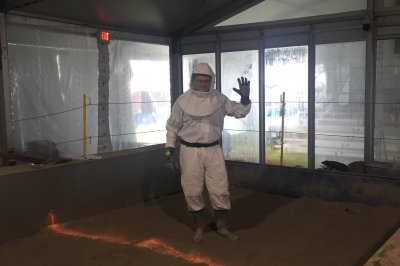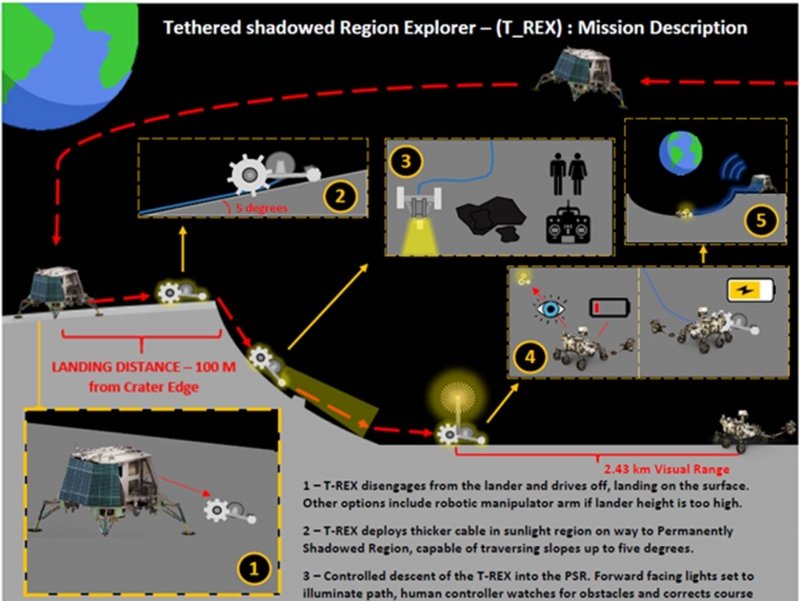MTU Crew Goes BIG for NASA’s Lunar Projects
Breakthrough, innovative, game-changing — the NASA BIG Idea Challenge funds eight
university teams to work on lunar payloads and study the Moon’s darkest reaches.
A student team led by graduate student Marcello Guadagno and guided by Paul van Susante,
assistant professor of mechanical engineering at Michigan Technological University, wants to take their rover technology to the
“dark side”. Not for evil — the polar craters where the moon holds the closest source
of extraterrestrial water also happen to be permanently shadowed. Getting to the frozen
deposits and studying those polar craters are two aspects of NASA’s Artemis program, which is aiming for a crewed moon landing in 2024.
NASA’s BIG Idea Challenge
The BIG Idea Challenge selected teams to develop systems to research and navigate permanently shadowed regions that include
data collection, wireless power generation, autonomous mobility and sticking a lunar
landing. Michigan Tech’s team has been awarded $162,637 alongside seven other groups.

exploration on the moon.
“It’s an exciting time for NASA and students across the country,” said Drew Hope,
Game Changing Development program manager at NASA’s Langley Research Center in Hampton,
Virginia. “Thanks to our partnership with the Office of STEM Engagement, this is the
most money NASA has awarded in a student challenge directly connected to Artemis.
I look forward to seeing the inventive designs come to life as well as how they can
advance our exploration capabilities in permanently shadowed craters on the Moon.”
T-REX to the Moon
The Michigan Tech team’s project is called T-REX, short for the Tethered permanently-shadowed
Region EXplorer. The system is a rover that lays down lightweight, superconducting
cable connected to a lander. Once the rover reaches its final spot after traversing
rocky crater terrain into the permanently shadowed regions, the rover can serve as
a recharging hub and communication relay for other robots, providing continuous power
without direct sunlight.
The student team will build the rover, adding features like docking stations for charging
other robots and data relay. The team will work in van Susante’s Planetary Surface
Technology Development Lab (PSTDL) where they will have access to a dusty thermal
vacuum chamber: a vacuum-sealed room partially filled with moon dust simulant that
can be cooled to -196 degrees Celsius and heated to 200 degrees Celsius to imitate
the lunar surface conditions. Within this lunar simulant sandbox, T-REX will be assessed
for how it gets around obstacles and steep crater-like slopes while deploying its
cable.
By the end of testing, T-REX will be ready for reconstruction with flight hardware
to prepare for selection for a possible moon landing on future NASA commercial lunar
payload services (CLPS) missions (which also sounds like a great Jurassic Park sequel).

into permanently shadowed regions towing a superconducting cable.
Michigan Technological University is a public research university, home to more than
7,000 students from 54 countries. Founded in 1885, the University offers more than
120 undergraduate and graduate degree programs in science and technology, engineering,
forestry, business and economics, health professions, humanities, mathematics, and
social sciences. Our campus in Michigan’s Upper Peninsula overlooks the Keweenaw Waterway
and is just a few miles from Lake Superior.






